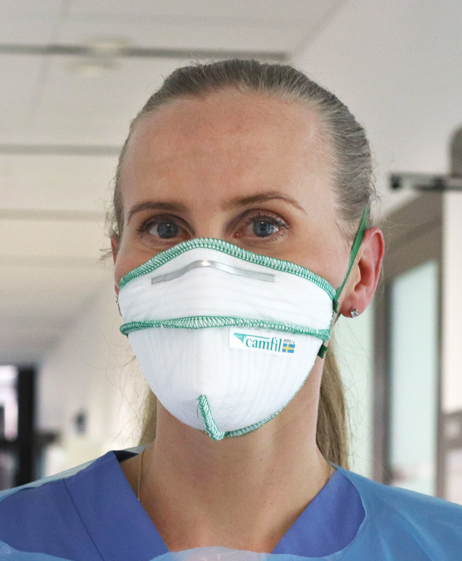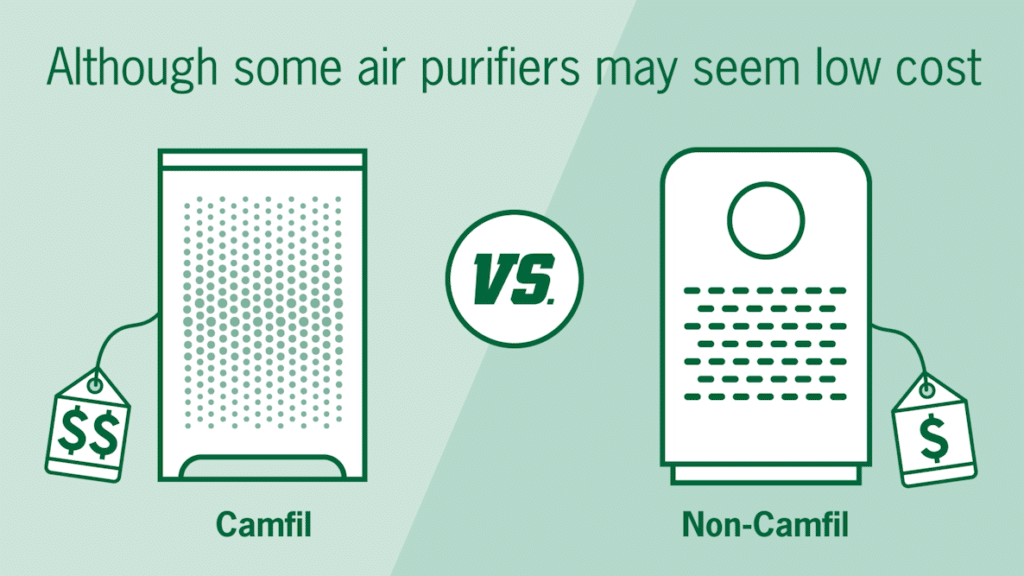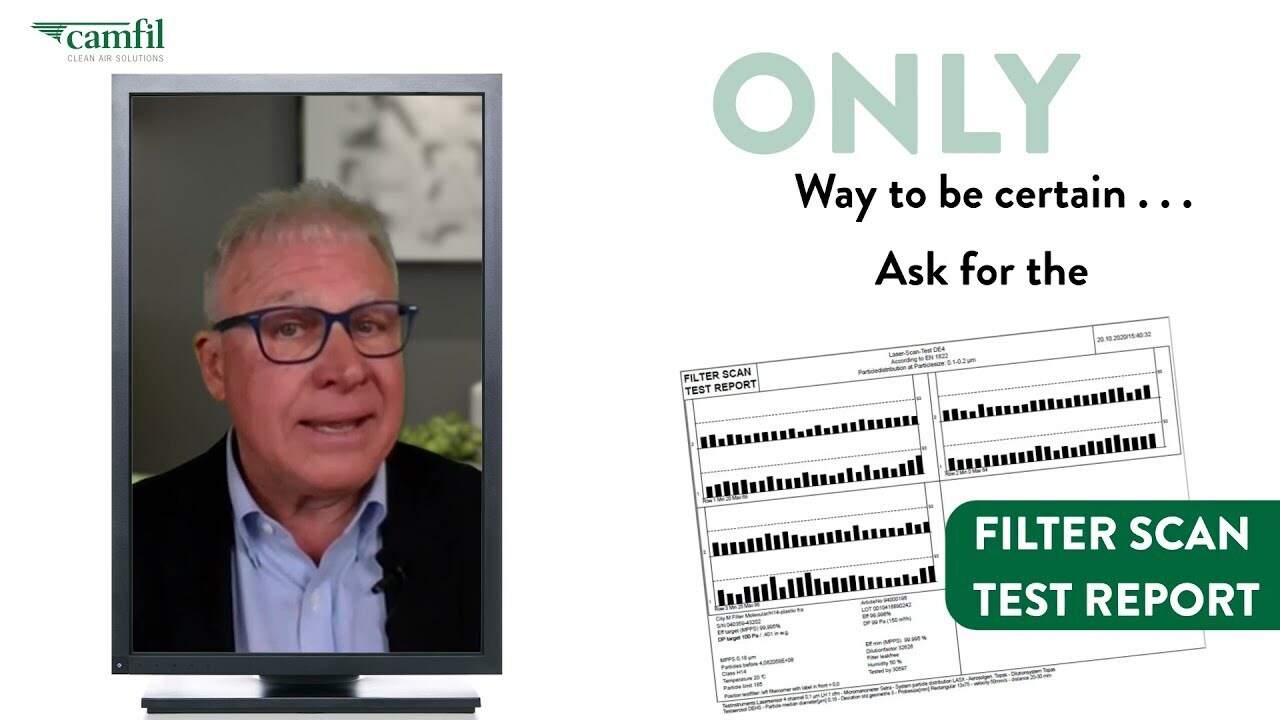If you were not familiar with the N95 respiratory mask before the COVID-19 pandemic, you almost certainly are now. The fabrics that make up the N95 mask are easy to breathe through and able to filter out dangerous airborne pathogens too small for our eyes to see. In times like these, N95 masks can be the difference between life and death. While the N95 is widely known, the meaning behind the letter N and the significance of the number 95 may be a mystery.

What Does N95 Stand For?
N95 masks are highly regulated by NIOSH (The National Institute for Occupational Safety and Health) and should not be confused with FFP masks which are regulated by CEN (European Committee for Standardization). NIOSH classifies the respiratory masks they regulate into one of three categories based upon the intended use. One of the categories is the “N” class which stands for Not-for-Oil. This mask is designed for use in applications where the particles encountered consists of dry, ultra-fine non-oil aerosols such as those generated from grinding, sawing, and thankfully in today’s world, biological particles. The number “95” stands for 95% particle capture efficiency. Higher efficiencies are available, but the N95 mask is the one most commonly used by medical personnel.
Once these masks have been worn, they are not laundered with other hospital fabrics. Despite the high demand for these masks during the COVID-19 pandemic, manufacturers continue to recommend disposing after a single use and not worn day after day. The CDC has issued guidelines when masks may be reused, but the guidelines are limited and recommended to be overseen by professionals. The demand has driven companies to urgently research effective methods to sanitize and recycle masks. If masks could be easily cleaned and safely reused, demand could be met; however, it’s not a simple task to remove the dirt particles and maintain the 95% particle capture efficiency.
How the N95 Masks Capture Small Particles
The fabrics (known as media) used to construct many of these masks are nonwoven, which is to say the fibers are randomly arranged, not woven from yarn in a repeating pattern like the fabric commonly used in clothing. Nonwoven fabrics are not unique; they are used in countless applications we encounter every day. However, the next step in the process is unique and the secret to the mask’s performance. The nonwoven media used in many of these masks is imparted with an electrostatic charge creating an effect, analogous to a magnet, known as an electret. The electrostatic charge greatly enhances the media’s filtration efficiency because the charge attracts small diameter particles to the relatively large diameter fibers in the media. Without that charge, many of these particles would otherwise easily pass straight through the media.
This media is typically sandwiched between two outer layers of fabric which acts as a prefilter to capture large particles and to protect the media from being damaged. Safely protected within the mask, the charged fabric makes an ideal filter for a respiratory mask. Unfortunately, an electrostatically charged media may turn out to be a very poor choice for a common HVAC system intake air filter.
“The most critical performance characteristic of an air filter is particle removal efficiency. The efficiency of an air filter is based on a test standard known as the MERV (Minimum Efficiency Reporting Value) scale developed by the ASHRAE 52.2 committee. Air filters are tested in a laboratory setting. Basically, an amount of test dirt with known particle sizes is introduced upstream and particles that pass through are counted downstream. The percentage of particles the filter captured is used to compute a MERV value. The MERV value is critical because the individuals responsible for the air quality inside a commercial office building, retail space, manufacturing facility or hospital for example, use the scale to select the MERV value that delivers the air quality needed for the safety of the people, products or equipment within their unique facility” according to Dave Blackwell, Director of Healthcare for Camfil, USA. “An air filter made from a nonwoven media containing a strong electrostatic charge, would seem to be an ideal fabric to use for many products, including air filters” says Blackwell. “However, one of the reasons you can’t use the same N95 mask day after day is why an everyday intake air filter, made with an electrostatic media, is not a good long-term decision.”
The Effect Accumulating Ultra-fine Dirt Particles Has on Charged Media
It was stated earlier that the “N” in N95 means the mask is intended for non-oil aerosols and the “95” indicates the percentage of ultra-fine particles the mask will capture. The outer layers of the mask act as a prefilter to capture large particles and heavy moisture when the user inhales or exhales. The prefilter ensures the highly-charged media in the center generally only encounters the dry, ultra-fine particles that escape capture in the outer layers. The magnetic-like effect of the charged media attracts these small particles out of the airstream and onto the fibers.
As ultra-fine particles accumulate on the charged media, an interesting phenomenon occurs that many may recall from a grammar school science class. A magnet will attract a steel coin and if the coin is put on a piece of paper, it can be moved across the paper with a magnet held underneath. Turn the paper sideways and the coin will not fall; appearing to defy gravity. However, add more sheets of paper, repeat the experiment and eventually a point will be reached where the magnet’s influence is unable to penetrate the paper and the coin falls to the floor.
An air filter made with highly-charged media will do the same. Much like the magnet and a single piece of paper, the filter may achieve a very high initial particle removal efficiency (MERV) when brand new. When the electret is performing at peak capacity, dirty particles passing by in the airstream are powerfully attracted to the fibers. However, as particles accumulate on the fibers, they begin to act as an insulator much in the same way adding paper reduced the magnets ability to hold the coin in place.
As the insulation effect continues, dirty particles begin slipping past in greater numbers. There is an inverse relationship between increasing insulation and particle capture efficiency. If it were possible to visibly display the MERV value of an installed filter undergoing this process, the numbers would continuously drop as time passed; 15 to 14 to 13 to 12 for example. Eventually the filter may bottom out three or four levels lower than what its value was when brand new. If a facility manager installed a filter with a high MERV value (i.e. MERV 15) only to discover later it was actually performing at a much lower level (i.e. MERV 12), the consequences could be severe, particularly in these days where there’s a high awareness of airborne viruses.
An Addition Added to the MERV 52.2 Test Standard to Account for the Phenomenon
Members of ASHRAE’s 52.2 committee were aware of this phenomenon. Appendix J was added to the Standard so consumers would know the actual MERV value of a filter as it is in use, not just when brand new. The Appendix J conditioning step addresses the electrostatic charge from the media. The result of the second test is listed as a filter’s MERV-A value which is the particle capture efficiency without the benefit of an electret.
For example, an initial MERV test conducted on a filter with an electret may result in a published value of MERV 15. However, the same filter tested under the Appendix J procedures may perform as a MERV 12. Putting the two test results together would result in the filter being labeled as a MERV 15 / MERV-A-12A. This indicates once the electret is no longer effective, the filter performs as if it is a MERV 12. A filter constructed without the value of an electret, could perform as a MERV 15 under the 52.2 standard. The Appendix J procedures are conducted, but since there is no electret to begin with, that filter still performs as a MERV 15. The labeling therefore would show the filter as a MERV 15/ MERV-A-15A indicating the filter performs as a MERV 15 before and after the influence of any electret present has dissipated. A consumer who determined a MERV 15 is required for a particular application would know which filter to select.
Camfil’s Dave Blackwell makes the point. “Charged media is one solution for N95 masks because it delivers a high capture efficiency. The downside is a short service life. Air filters can’t be replaced every day like masks can. What would medical personnel do if they wore the same N95 mask for weeks at a time and somehow the rating on their mask changed as the electrostatic charge became less effective?” questioned Blackwell. “Would medical professionals wear a mask that changed from N95 to N85? N80? N65? I don’t think so. Unfortunately, labels don’t magically change on masks anymore than they do on air filters, but if the labels could change , would a facility manager install a filter with a MERV that changed from MERV 15 to 14 to 13 and then 12? Of course not. That’s why a anyone responsible for the safety of others should select a filter based on its MERV-A value. That number doesn’t change.”
About Camfil Clean Air Solutions
For more than half a century, Camfil has been helping people breathe cleaner air. As a leading manufacturer of premium clean air solutions, we provide commercial and industrial systems for air filtration and air pollution control that improve worker and equipment productivity, minimize energy use, and benefit human health and the environment.
The post What N95 Respiratory Masks Can Teach Us About Air Filters – Camfil Reports appeared first on Air Filters for Clean Air.
from Air Filters for Clean Air

